10 Best Programming Language for Banking Software in 2025
- TECHVIFY Team
- 0 Comments
Information technology reshapes every industry, including finance, where banking software is introduced. Innovations like IoT in supply chains, AI in software testing, and big data in retail have enhanced efficiency and customer experience. Financial technology, utilizing tools like mobile apps, machine learning, and blockchain, offers solutions that surpass traditional methods in accessibility and cost-effectiveness.
The finance sector is competitive, with few standout solutions. Historically, C++ and Java were preferred for banking app development, but their relevance may be diminishing due to rapid changes in programming languages. Each language has its advantages and ongoing improvements to maintain relevance. Below are the best programming language for banking software available in 2025.
I. 10 Best Programming Language for Banking Software
1. Python
Python is a leading programming language in finance and banking, widely used in various fields including web application development, scientific computing, and data science. It holds 27.99% of the market share and is preferred for its simplicity and readability. Python is distinct from other languages as it uses whitespace indentation to structure code, instead of relying on keywords and brackets.
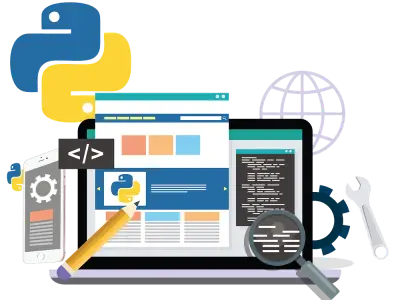
Why is Python recommended for Banking?
- Cost-Effective: Python is open-source, which means it is free to use and distribute. This particularly benefits startups and businesses looking to save on licensing costs.
- Data Analysis and Visualization: Python’s capabilities in processing data make it ideal for analyzing and visualizing large financial datasets.
- Rapid Prototyping: Python facilitates quick prototyping, which is useful for testing and developing new financial algorithms and models.
- Integration Support: Python can easily integrate with other platforms and languages, simplifying connections with existing financial systems and APIs.
2. Java
Java, an object-oriented programming language, was developed by Sun Microsystems in 1995. It is designed to be user-friendly and flexible, allowing it to run on various operating systems without needing code changes. It also scales well, making it suitable for managing large data volumes. Many global banks use Java for their financial platforms and systems, including corporate banking portals, electronic trading platforms, and customer-facing applications. Despite being over 28 years old and the emergence of new programming languages, Java remains a trusted choice for developing banking applications.
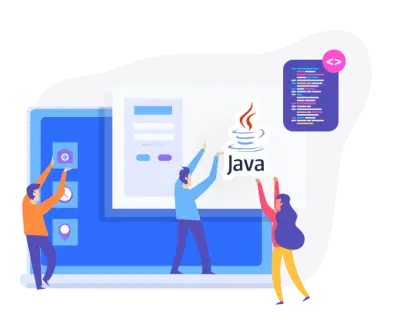
Why is Java recommended for Banking?
- Platform Independence: Java’s cross-platform compatibility makes it an excellent choice for banking applications that must operate across different operating systems.
- High Level of Security: Java includes built-in authentication mechanisms and security protocols, which help keep financial data secure and prevent unauthorized access.
- Reliability and Stability: Java’s strong typing, strict compliance, and exception handling contribute to developing robust, error-free banking applications.
- Mature Ecosystem: Java offers a wide range of open-source libraries and frameworks tailored for banking development, facilitating the creation of complex applications.
3. C++
C++ is a programming language that originated in the 1970s, building on C with added features and higher-level abstractions. It retains C’s core advantages and supports both object-oriented and procedural programming, making it suitable for writing efficient, modular code. C++ is commonly used in applications requiring high security and reliability, such as banking softaware, where it excels in performance and speed due to its ability to run low-latency programs.
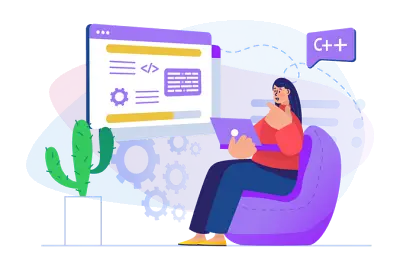
Why is C++ recommended for Banking?
- High Performance and Efficiency: C++ executes quickly and can manage large data volumes, making it ideal for algorithmic trading or real-time calculations.
- Low-level Control: C++ programmers can manipulate memory and access hardware interfaces directly, enhancing performance, especially in complex financial calculations.
- Mathematical Libraries: C++ offers a variety of mathematical libraries, which are crucial for numerical methods and statistical analysis in banking applications.
- Legacy Compatibility: Many existing banking systems are built in C, making C++ a practical choice for compatibility and integration.
More banking & fintech insights:
4. C#
C# is a modern programming language derived from C++ and is highly utilized in banking and finance. It ranks fourth in banking and fourth in finance according to HackerRank. As an object-oriented language, C# is essential for developing dynamic applications within the Microsoft .NET ecosystem. It shares its heritage with the C language family, making it recognizable to those familiar with C++ and Java. This background makes C# particularly valuable for professionals in the finance and banking sectors.
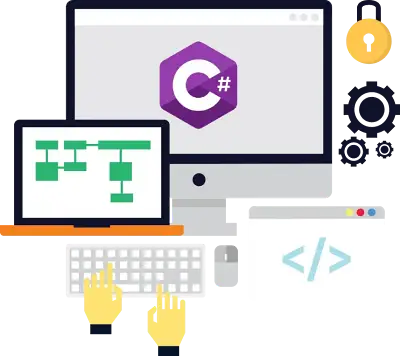
Why is C# Recommended for Banking?
- Framework Compatibility: C# is crucial for organizations using Microsoft’s .NET framework to develop applications.
- Purpose-Built: Designed specifically for the .NET framework, C# enhances simplicity and security in application development.
- Community Support: C# benefits from a large user community and a comprehensive set of development tools.
5. Ruby
Ruby is a programming language praised for its simplicity and productivity, making it popular among startups, particularly in the banking industry. It is often used with the Ruby on Rails framework, which developers choose for its ease of use and built-in security features—both cost and time savers.
Introduced in 1995 as a free, open-source language, Ruby was created by Yukihiro “Matz” Matsumoto. He aimed to design a straightforward yet internally complex language. Ruby gained significant traction by introducing the Ruby on Rails framework, which was widely adopted for web application development.

Ruby is well-suited for banking software due to its speed, security, and flexibility. It is commonly used to develop financial tools like payment systems and dashboards. The Rails framework simplifies coding and accelerates the development process. For startups aiming to develop their first minimum viable product (MVP), Ruby is a strong choice.
Why is Ruby Recommended for Banking?
- Simplicity: Ruby’s clear syntax allows easier writing and maintenance of complex banking code.
- Ruby on Rails: This framework provides tools and libraries that expedite web development tasks essential in banking.
- Security: Rails inherently protects against common threats like SQL injection and XSS, crucial for banking software security.
- Cost-Effective: Faster development with Ruby can lead to reduced costs in software creation and upkeep.
- Flexibility: Ruby supports multiple programming styles, enabling tailored solutions for specific banking needs.
- Community Support: A strong developer community and extensive libraries facilitate the implementation of advanced banking functionalities.
Looking for a trustworthy Banking Software Development company?
Contact TECHVIFY, Vietnam’s Leading Offshore Software Development & Outsourcing Company, for a consultation and development services.
6. SQL
SQL (Structured Query Language) is designed to manage and manipulate relational databases, making it highly relevant to finance and banking. Unlike general-purpose languages, SQL is domain-specific and primarily used to enhance database functionality, including data storage and strategic analysis. It is crucial in statistical modeling and data processing for large projects. As financial apps grow and user numbers increase, SQL’s significance in banking also rises.
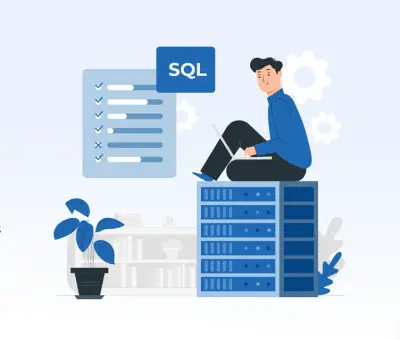
Why is SQL recommended for banking software?
- Querying and Reporting: SQL’s advanced querying abilities enable financial analysts to gather and summarize large datasets efficiently. This facilitates the production of detailed reports and supports necessary modifications.
- Relational Data Management: SQL provides structured data storage and efficient querying for managing relational datasets. This assists developers in handling complex business logic.
- Data Integrity and Consistency: SQL maintains data consistency and integrity by supporting ACID (Atomicity, Consistency, Isolation, Durability) properties.
- Scalability and Performance: SQL efficiently handles complex queries, supporting high transaction volumes and ensuring system responsiveness.
7. JavaScript
JavaScript Developed by Brendan Eich in 1995, JavaScript has become a leading programming language in the technology sector. It is used primarily for adding interactivity and dynamic content to web pages, such as enhancing website functionality and manipulating elements on the page. Originally known for its role in frontend web development, JavaScript now also plays a significant role in the banking industry, particularly in creating interactive web applications that enhance user experience and facilitate API integration.
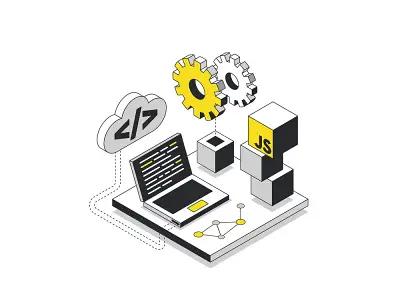
Why is JavaScript recommended in banking software?
- Mobile Development: JavaScript allows businesses to serve users on both iOS and Android platforms through a single codebase, utilizing frameworks like React Native and Ionic.
- API Integration: JavaScript enables banking applications to integrate with APIs, supporting features such as account aggregation, payment processing, and data analysis.
- Server-side Development: JavaScript, used with Node.js, offers a scalable environment for backend operations and efficiently handles them.
- Data Visualization: In banking, JavaScript is essential for financial data visualization, using libraries like D3.js and Chart.js to produce interactive charts, graphs, and dashboards
8. Kotlin
Introduced in 2011 by JetBrains, Kotlin has quickly gained popularity as a versatile programming language, especially within the banking sector. It is favored for its clean and concise syntax, which reduces potential errors and enhances code maintainability. Kotlin is interoperable with Java, which allows it to integrate seamlessly with existing bank software systems that are largely Java-based. This integration facilitates a smoother transition and faster adoption in banking environments.

Why is Kotlin recommended for banking software?
- Safety Features: Kotlin includes built-in safety features like null safety and immutability, which reduce common programming errors and improve app stability.
- Interoperability: Kotlin is fully interoperable with Java, making it easy to adopt in environments where Java is prevalent without replacing existing code.
- Concise Code: Kotlin’s syntax is more concise than Java’s, simplifying the development process and reducing the likelihood of bugs.
- Modern Language: Kotlin supports modern programming concepts like coroutines for managing background tasks efficiently, enhancing the performance of banking applications.
9. Swift
Apple launched Swift in 2014, and it has since emerged as a preferred programming language for iOS application development, including within the banking sector. It is recognized for its speed, efficiency, and safety features, making it an attractive choice for developing secure mobile banking applications. Swift’s compatibility with existing Objective-C code used in Apple’s ecosystems allows for seamless integration with legacy systems in banks.
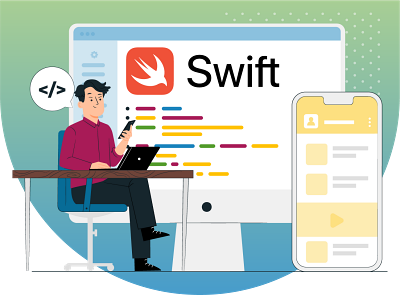
Why is Swift recommended for banking software?
- Enhanced Safety: Swift’s strong typing system and automatic memory management help prevent common security issues like buffer overflows and memory leaks, crucial for banking applications.
- Compatibility: Swift works seamlessly with Objective-C, enabling banks to gradually migrate their apps without complete rewriting, thus protecting legacy investments.
- Development Efficiency: Swift’s concise syntax and modern language features, such as optionals and generics, simplify complex code and speed up the app development process.
- Performance: Swift provides high-performance capabilities that are essential for processing the large volumes of transactions typical in banking apps, improving overall user experience.
10. Go
Go, also known as Golang, is an open-source programming language created by Google in 2007. It was created to enhance programming efficiency during a time of multicore, networked machines, and extensive codebases. Go combines simplicity and efficiency, making it a strong candidate for a variety of software development projects, including banking software.

Why Go is recommended for banking software?
- Concurrency Support: Go has built-in support for concurrency, using goroutines and channels. This allows it to handle multiple tasks efficiently, like transactions and data requests, without bogging down the system, which is crucial for high-load banking operations.
- Simplicity: The language syntax is clean and simple, which reduces the risk of programming errors and makes the code easier to maintain and update. This is beneficial for long-term projects that are common in the banking sector.
- Robust Standard Library: Go’s standard library is rich with tools and utilities directly supported by the language, including networking, cryptography, and data handling features, all essential for secure and efficient banking applications.
- Strong Typing: Go is statically typed, which helps catch errors at compile time, thus enhancing the reliability of the application—a critical aspect in financial software where errors can be costly.
II. Essential Attributes of Programming Languages for Banking Software
Programming languages are essential for building banking applications. When selecting a programming language, consider your business potential and certain key attributes that impact the user experience.
Security
Banking applications handle sensitive financial data and user transactions, necessitating a primary focus on security in the programming languages used. Users engage with these applications for tasks like transactions, bill payments, and investment management, all involving sensitive details like account information and personal identification.
These are prime targets for hackers. If this information is not securely stored and managed, it poses significant cybersecurity risks, potentially leading to data breaches that affect the user experience and expose the company to legal challenges.
Speed and Performance
Users expect banking applications to be fast and efficient. The financial sector requires applications that can process transactions and perform operations like risk management and data analysis quickly and in real-time. Slow or unresponsive applications can significantly diminish user satisfaction. Programming languages that support high performance ensure that the applications remain responsive and efficient, enhancing the user experience.
Scalability
Scalability is critical for banking applications as they must handle increasing volumes of data over time. A scalable programming language allows for the effective processing and analysis of large data sets and ensures smooth performance even as the application grows and extends over multiple servers or cloud infrastructures. This is essential to maintain performance standards without interruption.
III. How to Pick the Right Programming Language for your Banking Software
Selecting an appropriate programming language is crucial for the success and efficiency of your project. To make this decision, follow these steps:
-
Define Project Requirements: Understand your project’s goals, scope, and needs. Evaluate the type of project, the problem it addresses, the intended users, and any technical limitations or preferences.
-
Assess Team Expertise: Review your development team’s skills. Opt for a language your team is proficient in to enhance productivity and minimize training time. Use any specialized skills in your team to guide your choice.
-
Check Language Ecosystem and Community Support: Investigate the ecosystem and community backing of the programming languages you’re considering. Look at the availability of libraries, frameworks, and tools that support your project’s development and maintenance. A strong ecosystem and active community can reduce development time and effort.
-
Review Performance and Scalability: Address your project’s performance and scalability needs. Some languages are tailored for high-performance tasks, while others are better suited for web development or data analysis. Study the performance traits of various languages to find one that meets your project’s demands.
-
Consider Time and Budget: Analyze the time and budget available for your project. Some languages might require longer development periods or higher costs. Factor in the availability of skilled developers and the cost of necessary tools.
-
Evaluate Platform Compatibility: Identify the platforms your project will run on. Certain languages are more adapted for specific platforms, like mobile apps, web development, or desktop applications. Make sure the language you choose works well with your intended platforms.
-
Plan for Future Maintenance: Think about the future maintenance and support your project will need. Choose a language with a stable, active community and consistent updates. This helps ensure you can access resources, solve problems, and update your project as needed.
-
Explore Alternatives: Don’t restrict yourself to one language. Explore other languages that might fit your project. Compare their benefits and drawbacks to make a well-rounded choice.
-
Prototype and Test: If uncertain, build a small prototype or test several languages. This practical experience can help you determine the most suitable language for your project’s needs.
Conclusion
Choosing the right programming language is critical for banking software, as each language offers unique benefits tailored to different facets of banking. Whether it’s Python’s flexibility, Java’s robustness, or Swift’s seamless integration, the right choice can significantly enhance your application’s performance and security.
For expert guidance on navigating these choices and maximizing your software’s potential, TECHVIFY is your ideal partner. Elevate your banking software with TECHVIFY’s premier development consulting and services. Get in touch now to see real results!
TECHVIFY – Global AI & Software Solution Company
From Startups to Industry Leaders: TECHVIFY prioritizes results, not just deliverables. Accelerate your time to market and see ROI early with high-performing teams, AI (including GenAI) Software Solutions, and ODC (Offshore Development Center) services.
- Email: [email protected]
- Phone: (+84)24.77762.666





